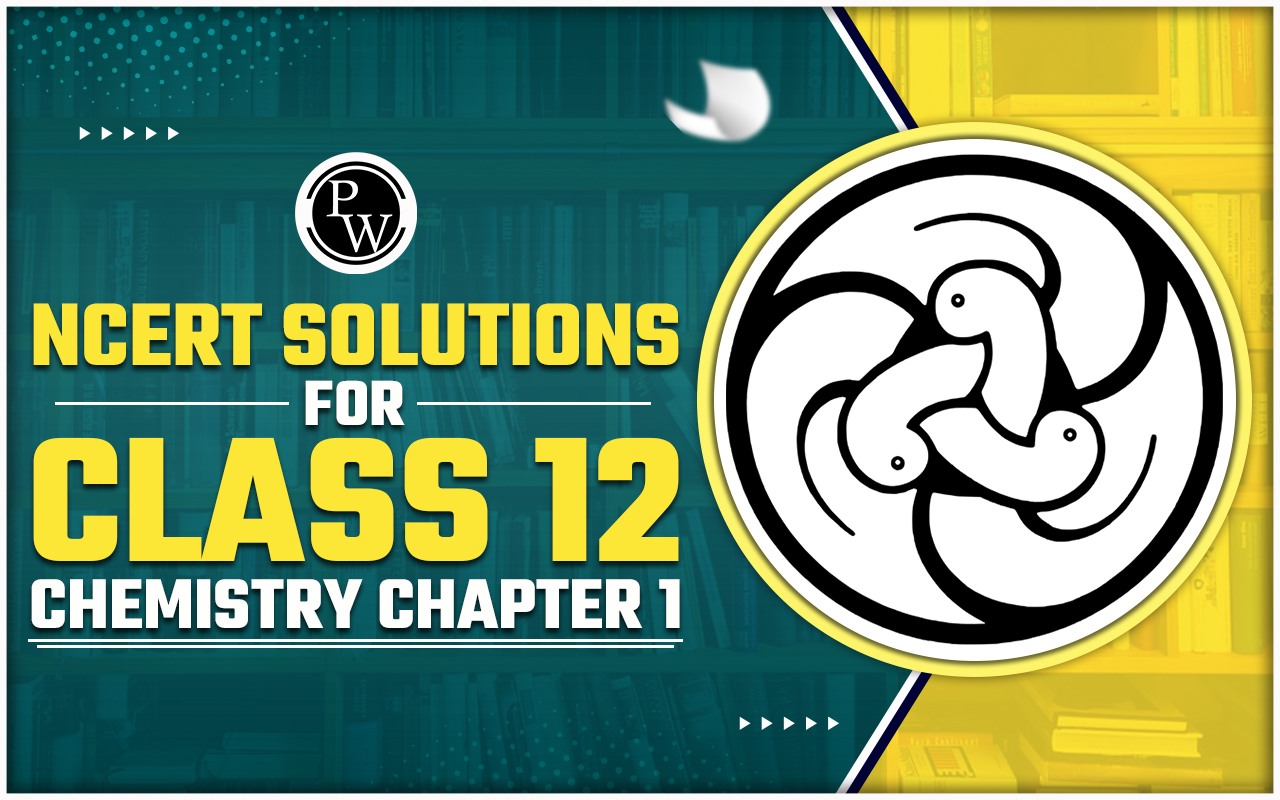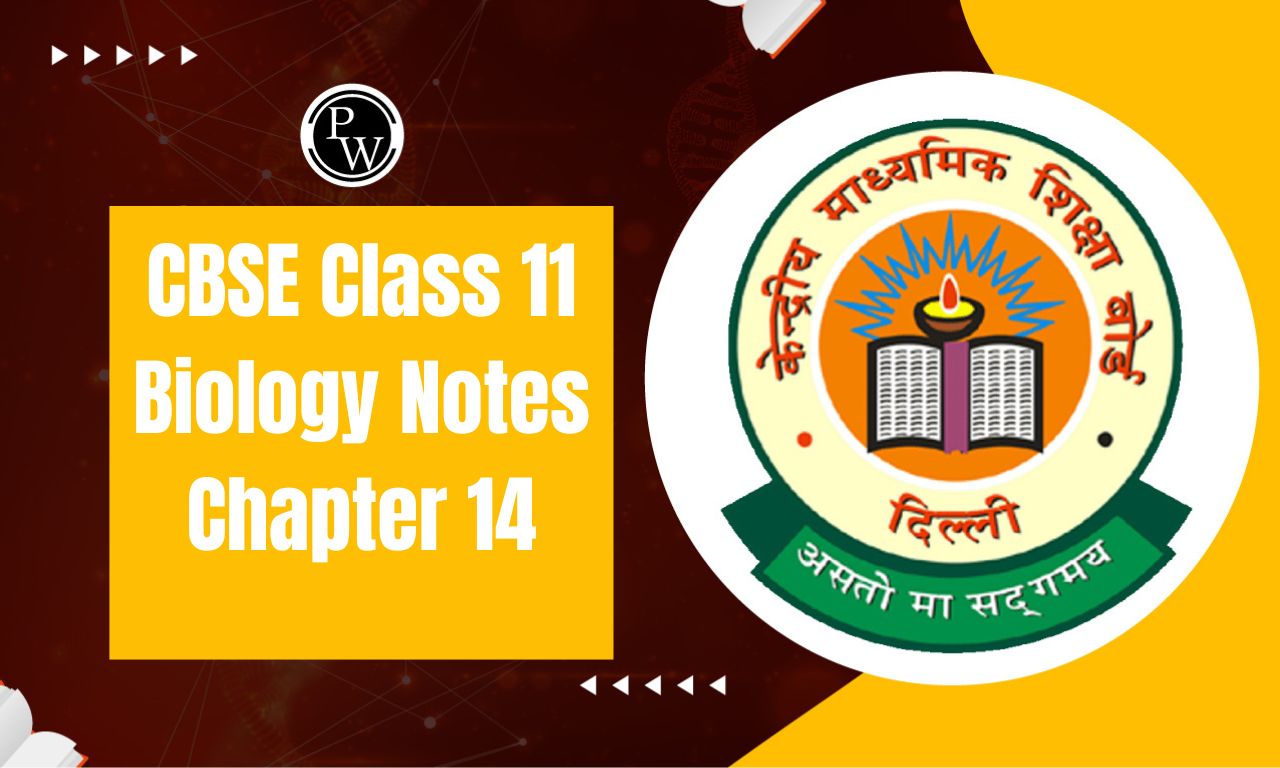
CBSE Class 11 Biology Notes Chapter 11: CBSE Class 11 Chapter 11 Transport in Plants discusses the transport of water and minerals in plants. It is one of the important chapters for board exams. We have provided the CBSE Class 11 Biology Notes Chapter 11 for the students to prepare for the boards and entrance exams.
CBSE Class 11 Biology Notes Chapter 11 Overview
Transport in plants is an interesting and essential process that ensures the distribution of water, nutrients, and gases throughout the plants. CBSE Class 11 Biology Notes Chapter 11 discusses the concepts of plant transport systems, highlighting mechanisms like transpiration, osmosis, and imbibition.What is Translocation?
Substances travel short distances by active transport in addition to cytoplasmic streaming and diffusion. Translocation is the term for longer-distance transport that occurs via the vascular system's xylem and phloem.Means of Transport in Plants
There are generally three means of transport in plants, which are:- Diffusion
- Facilitated Diffusion
- Active Transport
Diffusion
Diffusion is a passive process which involves the movement of molecules from areas of higher concentration to lower concentration, occurring within cells, between cells, or over short distances such as from the spaces within a leaf to the external environment. It doesn't require energy expenditure and operates randomly. While typically observed in gases and liquids, diffusion can also happen in solids, although less frequently. Factors such as concentration gradient, membrane permeability, temperature, and pressure influence the rate of diffusion.Facilitated Diffusion
In Facilitated diffusion, specialized proteins are used to transport substances across membranes without using ATP energy. However, it cannot move molecules from low to high concentrations without energy input. These proteins create channels in the membrane, some of which are always open while others can be controlled. Certain channels are large, permitting a variety of molecules to pass through. Porins are proteins forming large pores in the outer membranes of plastids, mitochondria, and some bacteria, facilitating the passage of molecules, even small proteins. In a facilitated diffusion, the following types of processes can happen: Symport: Both molecules cross the membrane concurrently, proceeding in the same direction. Antiport : Molecules cross the membrane by moving in opposite directions to each other. Uniport: The passage of a molecule across the membrane occurs independently, not influenced by other molecules.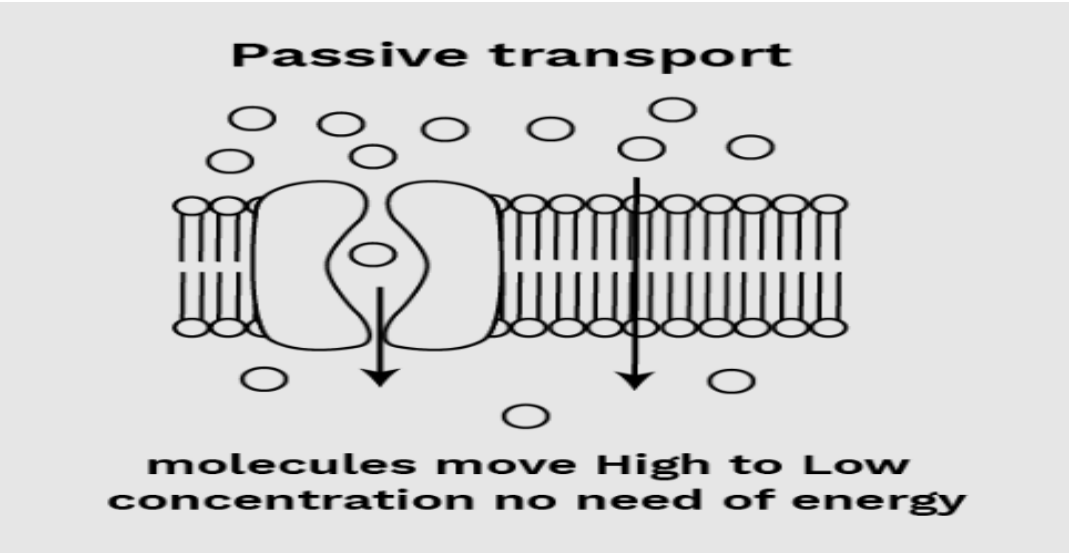
Active Transport
In Active transport, energy is used to move molecules against their concentration gradient, facilitated by specific membrane proteins. These proteins play important roles in both active and passive transport processes. Pumps are a type of protein that uses energy to transport substances across the cell membrane, including from low to high concentrations ('uphill' transport). The transport rate is maximum when all protein transporters are in use or saturated. Carrier proteins, like enzymes, exhibit specificity in the molecules they transport across the membrane and are sensitive to inhibition by compounds interacting with their side chains.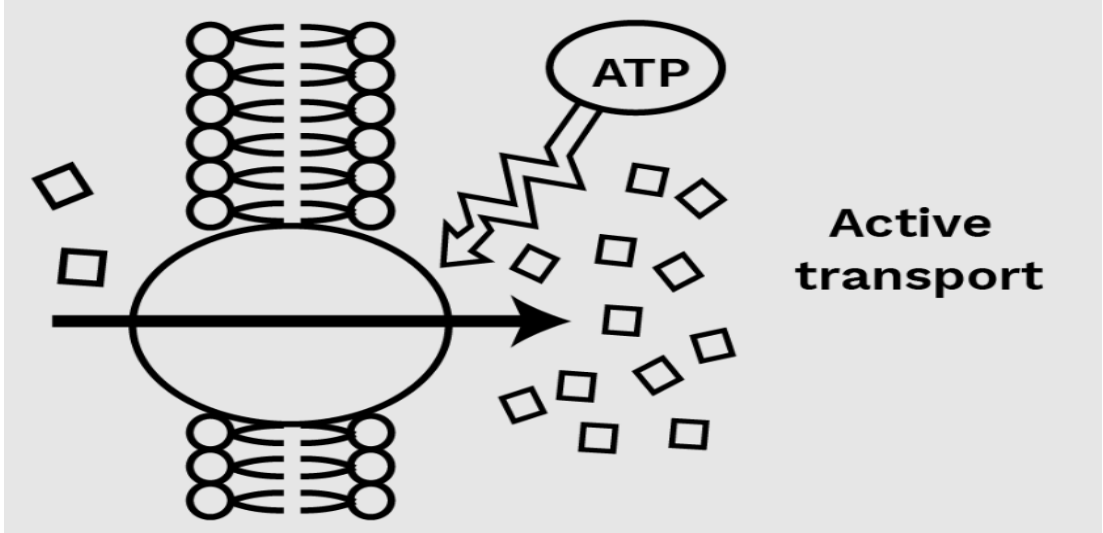
What is Water Potential?
Water potential (ψw) is an important concept for understanding how water moves in plants. It consists of two main factors: solute potential (ψs) and pressure potential (ψp). Water molecules possess kinetic energy, which determines their movement. In any system, the concentration of water correlates with its kinetic energy or water potential. Pure water has the highest water potential. Water potential (ψ) is symbolized by the Greek letter Psi (ψ) and measured in pressure units like pascals (Pa). Pure water at standard temperatures, without pressure, has a water potential of zero.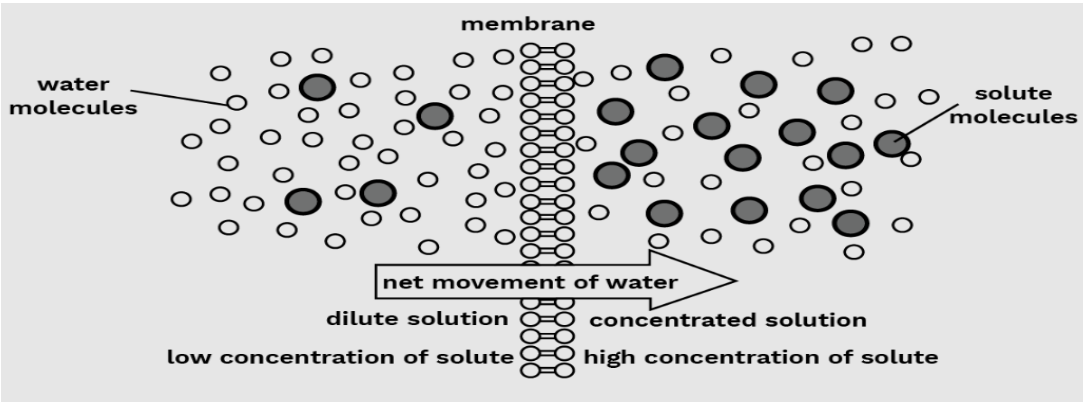 When a solute is added to pure water, the concentration of free water molecules decreases, lowering the water potential. This reduction is called solute potential (ψs), and always has negative values. More solute molecules lead to a greater reduction in water potential.
Applying pressure above atmospheric pressure increases water potential, similar to pumping water. In plants, pressure can build up within cells, making them turgid, due to water diffusion against the cell wall. This raises pressure potential (ψp), typically positive but can be negative in certain contexts like water transport in the xylem.
The water potential of a cell is influenced by both solute and pressure potentials, the overall water potential (ψ) is represented by :
(ψ = ψp + ψs).
When a solute is added to pure water, the concentration of free water molecules decreases, lowering the water potential. This reduction is called solute potential (ψs), and always has negative values. More solute molecules lead to a greater reduction in water potential.
Applying pressure above atmospheric pressure increases water potential, similar to pumping water. In plants, pressure can build up within cells, making them turgid, due to water diffusion against the cell wall. This raises pressure potential (ψp), typically positive but can be negative in certain contexts like water transport in the xylem.
The water potential of a cell is influenced by both solute and pressure potentials, the overall water potential (ψ) is represented by :
(ψ = ψp + ψs).
What is Osmosis?
Osmosis refers to the movement of water across a selectively permeable membrane. This process happens naturally, driven by certain factors. The direction and speed of osmosis are influenced by both pressure and concentration gradients. Water moves from areas of higher chemical potential or concentration to those of lower potential until a balance is reached. At equilibrium, both chambers should possess nearly identical water potential.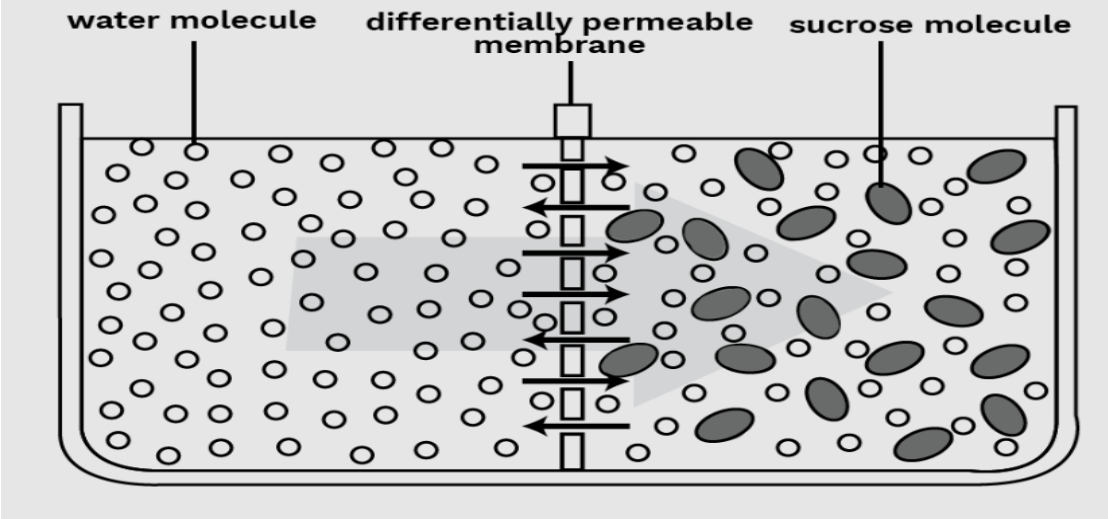
Types of Solution
There are generally three types of solutions which are: Isotonic Solution: An external solution is considered isotonic when its osmotic pressure matches that of the cytoplasm. Hypotonic Solution: When the external solution is less concentrated compared to the cytoplasm, it's termed hypotonic. Hypertonic Solution: If the external solution is more concentrated than the cytoplasm, it's referred to as hypertonic.What is Plasmolysis?
Plasmolysis occurs when water moves out of plant cells, causing the cell membrane to shrink away from the cell wall. This happens in hypertonic solutions where there are more solutes outside the cell compared to inside. When cells are placed in an isotonic solution, there is no net flow of water in or out of the cell. Plasmolysis is reversible. In hypotonic solutions, water diffuses into the cell, creating turgor pressure against the cell wall, which is important for cell enlargement and growth.What is Imbibition?
Imbibition is a special form of diffusion wherein solids, particularly colloids, absorb water, leading to an increase in volume. Imbibition involves water movement along a concentration gradient, akin to diffusion. Materials like seeds, with minimal water content, readily absorb water. A water potential gradient between the absorbent material and the liquid being imbibed is important for this process. Additionally, there must be an affinity between the absorbent and the liquid for successful imbibition.Pathways of Water Absorption in Plants
The root hairs absorb water and mineral solutes solely through diffusion. Water can enter the deeper root layers through two distinct pathways once it is absorbed by the root hairs: Apoplast Pathway: The apoplast is the continuous system of cell walls throughout the plant, excluding the casparian strips in root endodermis. Water movement through the apoplast occurs via intercellular spaces and cell walls, without crossing cell membranes. Symplast Pathway: The symplastic system involves interconnected protoplasts through plasmodesmata. Water moves through the cytoplasm of cells, entering via cell membranes, which slows the process. Cytoplasmic streaming may aid symplastic movemen t, as observed in Hydrilla leaf cells where chloroplast movement is visible.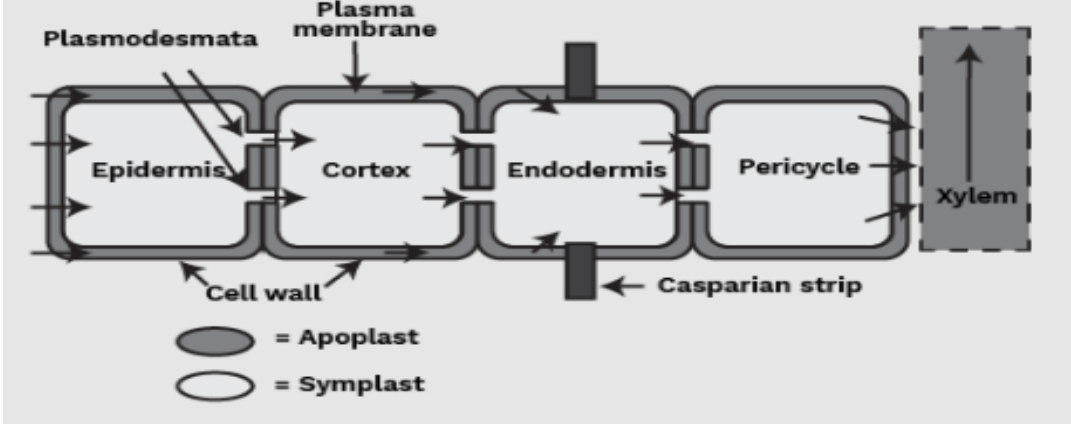
Transpiration Meaning
Transpiration is the process of plants losing water through evaporation, primarily occurring through stomata, which also facilitates gas exchange. Stomata typically opens during the day and closes at night, regulated by changes in guard cell turgidity. Radially oriented cellulose microfibrils help stomatal opening. External factors like temperature, light, humidity, and wind speed, along with plant factors such as stomata number and distribution, influence transpiration.Factors Affecting Transpiration
The factors mentioned below affects the rate of transpiration:- The degree of heat in the environment influences the rate of transpiration.
- The intensity and duration of light exposure affect transpiration.
- The moisture content in the air directly affects transpiration. Higher humidity levels generally result in reduced transpiration rates.
- The movement of air can impact transpiration. Increased wind speed can speed up transpiration by affecting the removal of water vapor from the leaf surface.
- The density and arrangement of stomata on leaves affects the rate of transpiration.
- The proportion of stomata that are open at any given time affects transpiration. More open stomata allow for greater water loss through transpiration.
Benefits of CBSE Class 11 Biology Notes Chapter 11
The following are the benefits of using CBSE Class 11 Biology Notes Chapter 11:- CBSE Class 11 Biology Notes Class 11 helps students organize and improve their understanding of complex concepts such as transpiration, osmosis, and imbibition.
- These notes are concise and crisp which help make it easier to recall later during exams or while studying related topics.
- Students can highlight important concepts, definitions, and key points, making it easier to identify and focus on essential information.
CBSE Class 11 Biology Notes Chapter 11 FAQs
What is Transpiration?
The process by which plants release extra water is called transpiration. Only a little amount of water is needed by plants to survive, and they release the remaining extra water through transpiration.
How many chapters are there in class 11 biology CBSE?
The number of chapters in CBSE Class 11 Biology has been cut from 22 to 19.
Is 11th Biology tough?
The subject is not particularly tough in and of itself; students must put in a lot of hard work to succeed in it.
What is the transport system of the plant cell?
Water flows through xylem via root absorption, root pressure, capillary action, and transpiration, while sugars flow through phloem via active transport.
What Does "Facilitated Diffusion" Mean?
Facilitated diffusion is one of the transport processes carried out by proteins known as permeases.
🔥 Trending Blogs
Talk to a counsellorHave doubts? Our support team will be happy to assist you!

Check out these Related Articles
Free Learning Resources
PW Books
Notes (Class 10-12)
PW Study Materials
Notes (Class 6-9)
Ncert Solutions
Govt Exams
Class 6th to 12th Online Courses
Govt Job Exams Courses
UPSC Coaching
Defence Exam Coaching
Gate Exam Coaching
Other Exams
Know about Physics Wallah
Physics Wallah is an Indian edtech platform that provides accessible & comprehensive learning experiences to students from Class 6th to postgraduate level. We also provide extensive NCERT solutions, sample paper, NEET, JEE Mains, BITSAT previous year papers & more such resources to students. Physics Wallah also caters to over 3.5 million registered students and over 78 lakh+ Youtube subscribers with 4.8 rating on its app.
We Stand Out because
We provide students with intensive courses with India’s qualified & experienced faculties & mentors. PW strives to make the learning experience comprehensive and accessible for students of all sections of society. We believe in empowering every single student who couldn't dream of a good career in engineering and medical field earlier.
Our Key Focus Areas
Physics Wallah's main focus is to make the learning experience as economical as possible for all students. With our affordable courses like Lakshya, Udaan and Arjuna and many others, we have been able to provide a platform for lakhs of aspirants. From providing Chemistry, Maths, Physics formula to giving e-books of eminent authors like RD Sharma, RS Aggarwal and Lakhmir Singh, PW focuses on every single student's need for preparation.
What Makes Us Different
Physics Wallah strives to develop a comprehensive pedagogical structure for students, where they get a state-of-the-art learning experience with study material and resources. Apart from catering students preparing for JEE Mains and NEET, PW also provides study material for each state board like Uttar Pradesh, Bihar, and others
Copyright © 2025 Physicswallah Limited All rights reserved.
Get App

